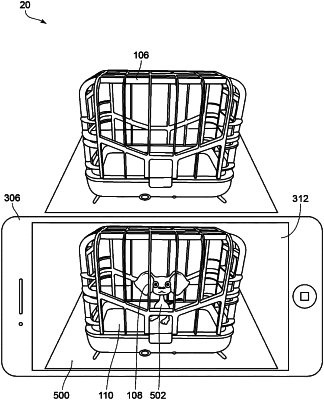| CPC G06T 19/006 (2013.01) [G02B 27/0179 (2013.01); G06F 3/011 (2013.01); H04N 23/56 (2023.01)] | 8 Claims |

|
1. An augmented reality system, comprising:
a physical apparatus having a plurality of light-emitting elements to selectively illuminate locations on a surface, and a signal receiver for receiving a signal; and
an augmented reality application in the form of computer-readable instructions stored on a computer readable medium, the augmented reality application, when executed by at least one processor of a computing device, the computing device having at least one camera and a display, cause the computing device to capture at least one image of the physical apparatus via the at least one camera, generate a virtual reality object that is presented in the at least one image of the physical apparatus on the display, and transmit the signal to the signal receiver of the physical apparatus to cause the light-emitting elements of the physical apparatus to be energized and deenergized so as to selectively illuminate selected ones of the locations on the surface which are indicative of a location of the virtual reality object on the display wherein the selective illumination of the light-emitting elements to generate the appearance of travel of the virtual object on the surface.
|